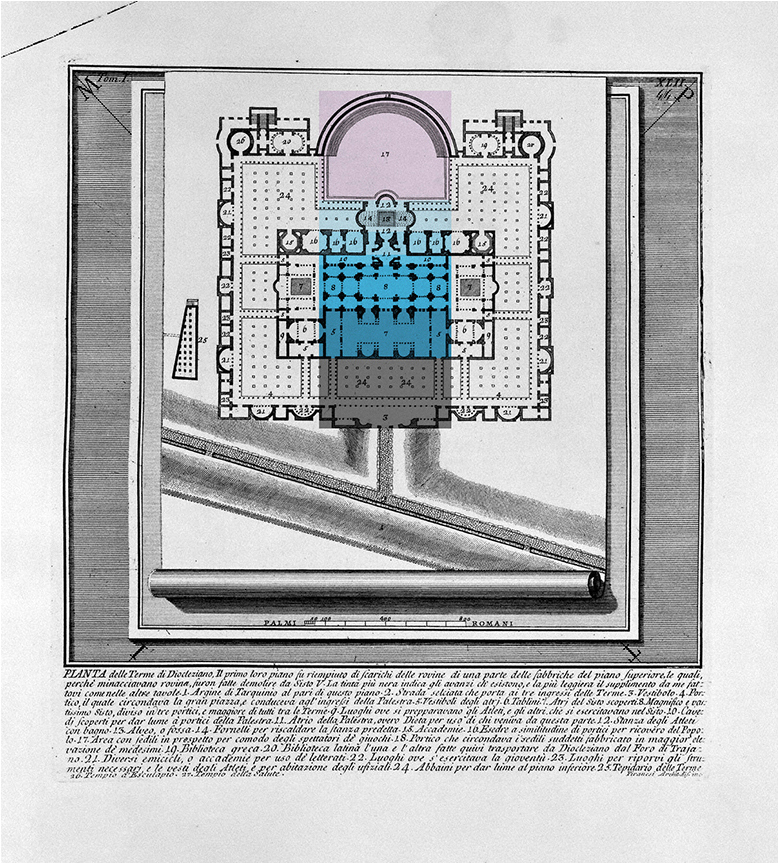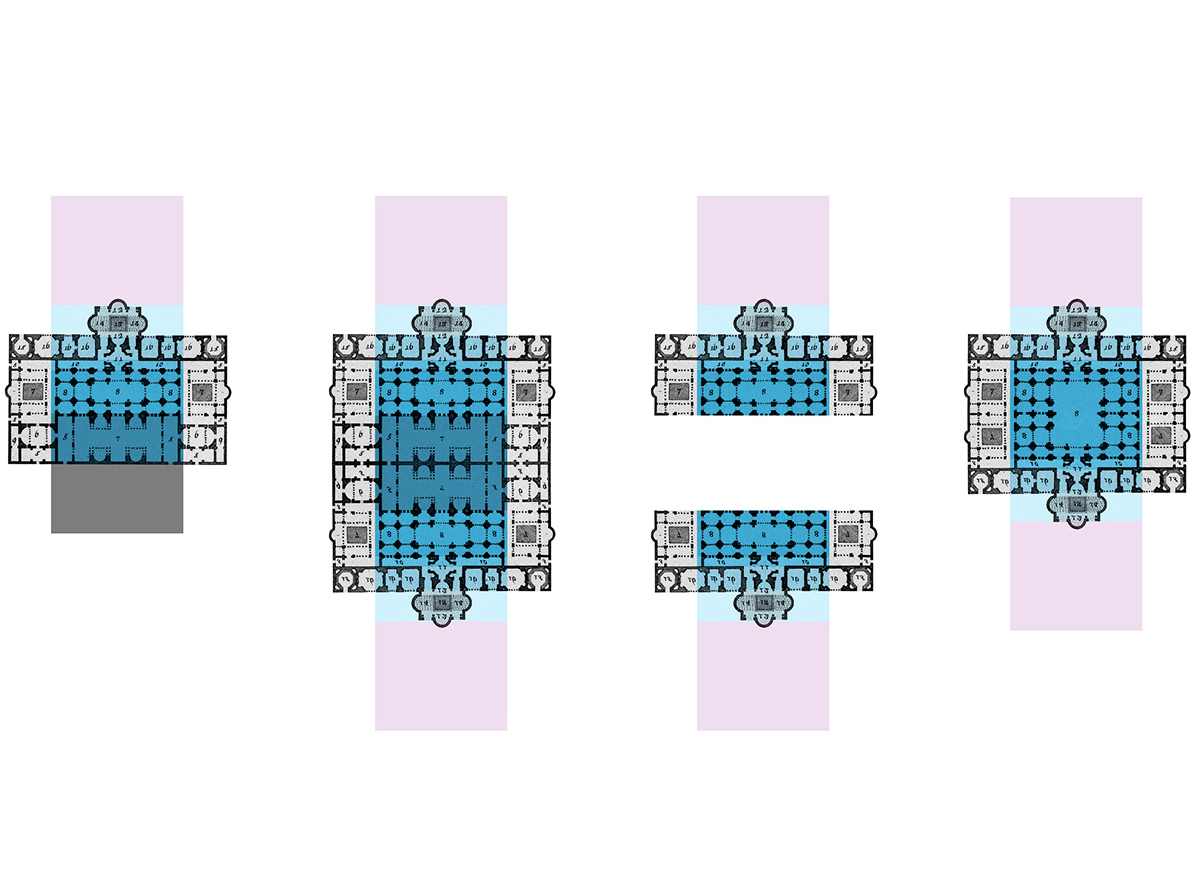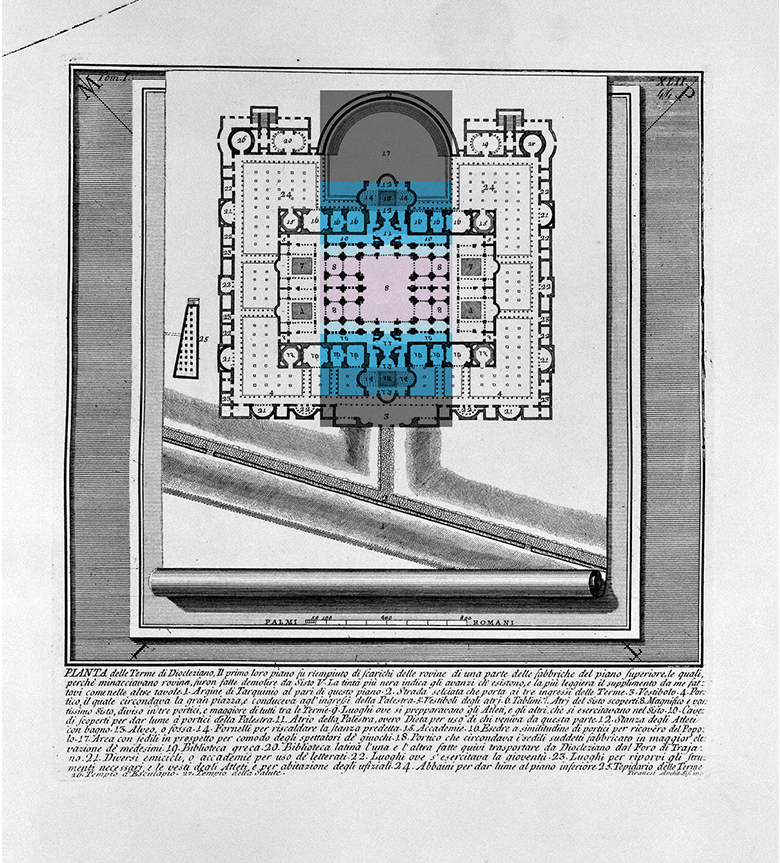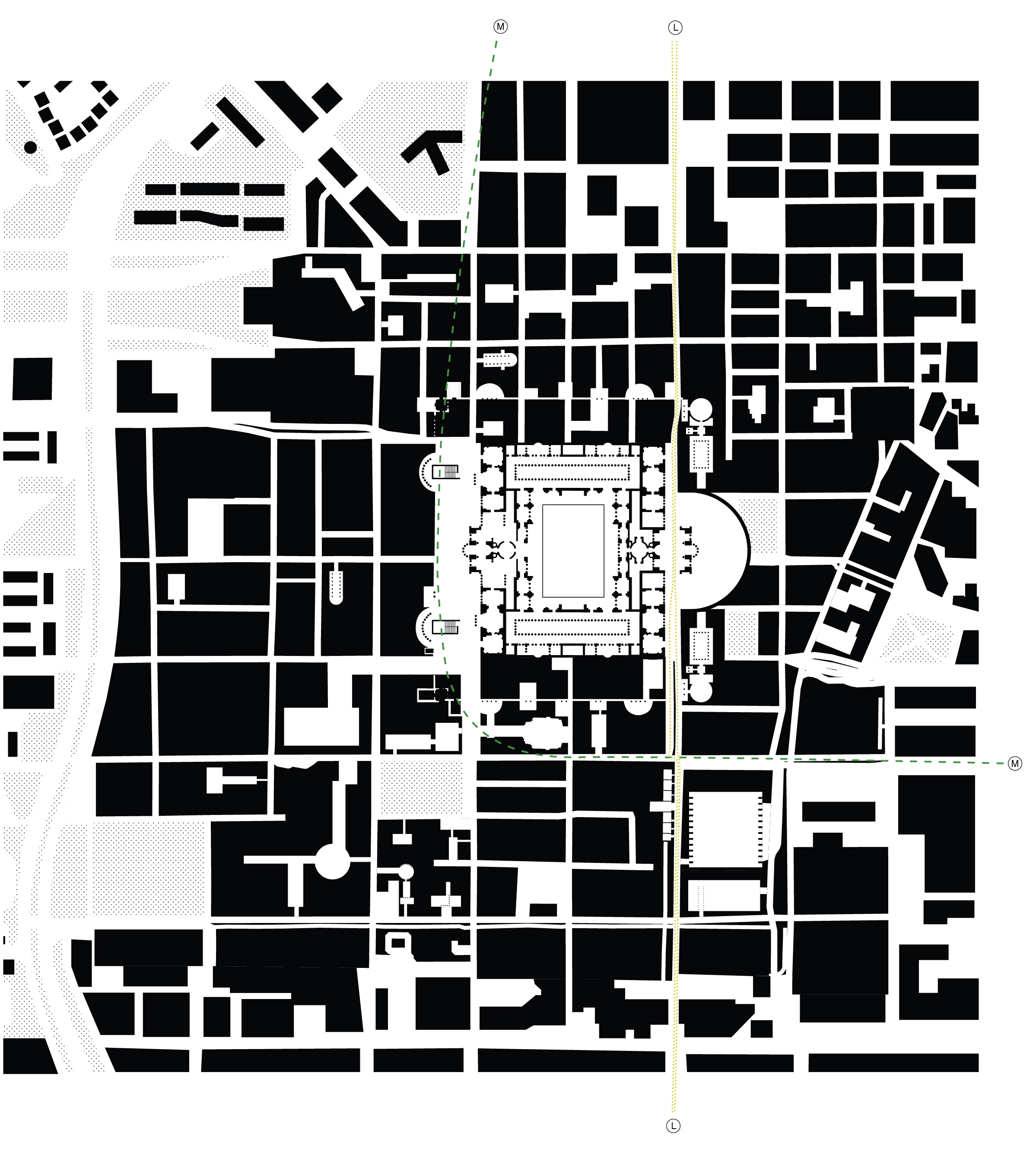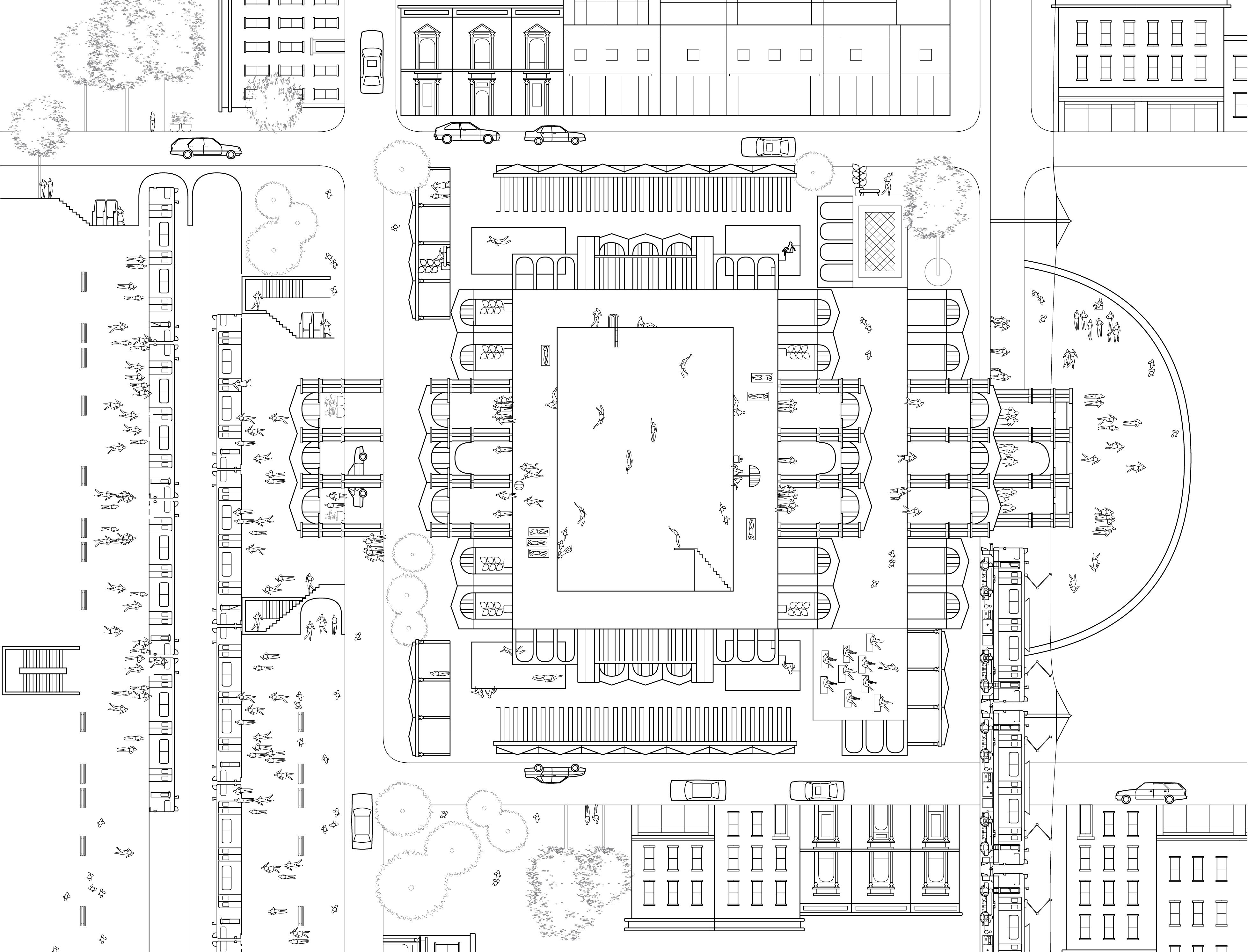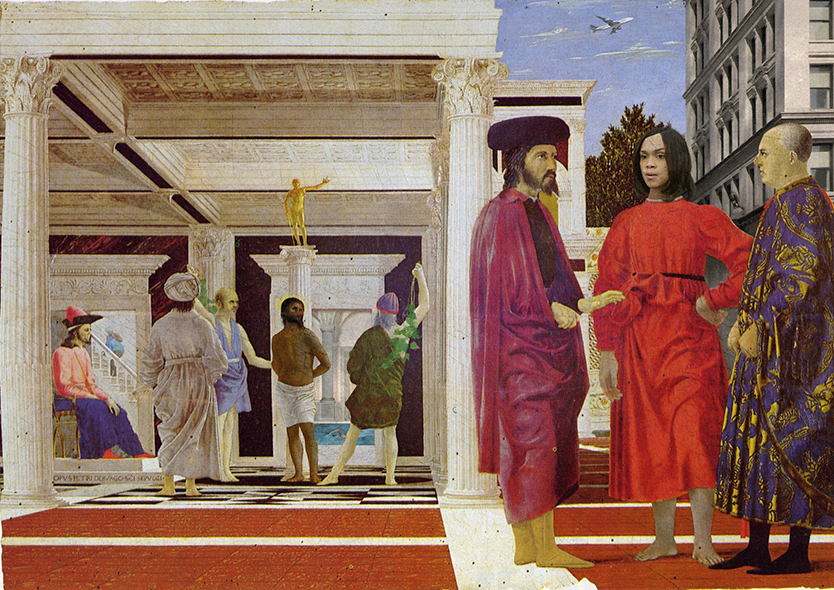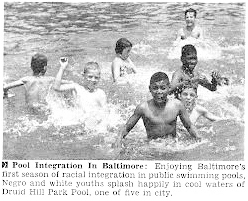
They Came Together proposes that the Roman Baths of Diocletian be reconstructed on the edge of downtown Baltimore. Located between a subway station and light rail corridor, as a public amenity, the baths are meant to create a bridge between transportation networks. To do so, the original plan of the Baths of Diocletian is altered to create a symmetrical series of rooms that lead to a large communal pool which can be accessed from two opposite ends of the site. While the original plan created a one-way procession, the new plan is edited to create a two-way sequence: from either end of the site one enters a series of hot spas, saunas, dressing rooms and showers which all terminate in a large central pool for cold bathing and wading. The sequence recognizes the politics of architectural choreography, as bathers move toward a communal area—an integrated space that recalls the public swimming pools in Baltimore. Historically these public pools have amplified the racial issues of the day, demonstrated by the violent reaction toward attempts to integrate public pools during the civil rights era. As the memory of such proactive public works disappears, the existence of racial integration itself seems to fade in the face of economic disparity. They Came Together reflects the passing of such a revolutionary time while challenging the spatial variables that continue to fuel social stratification along racial lines.
